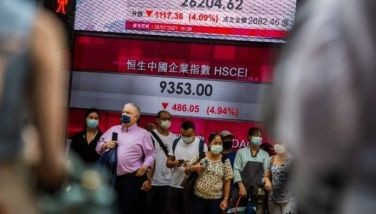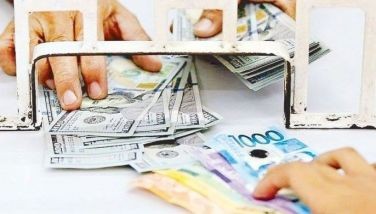Tylenol and Boeing

Crisis situations test the mettle of corporate executives. How they react determines how quickly, if at all, it can regain public trust. There are case studies PR practitioners discuss all the time. The best one involved Tylenol.
Time magazine recalls: “On Sept. 29, 1982, three people died in the Chicago area after taking cyanide-laced Tylenol at the outset of a poisoning spree that would claim seven lives by Oct. 1. The case has never been solved, and so the lingering question – why? – still haunts investigators.
“According to TIME’s 1982 report, Food and Drug Administration officials hypothesized that the killer bought Extra-Strength Tylenol capsules over the counter, injected cyanide into the red half of the capsules, resealed the bottles, and sneaked them back onto the shelves of drug and grocery stores.”
The immediate reaction of the Johnson and Johnson CEO was to decisively order an expensive pull out of all Tylenol products from the market.
People appreciated J and J’s putting public safety above the financial costs of the recall. By keeping keeping the public trust, Tylenol was able to win back market share after the crisis.
Today, because of social media, corporate response must be a lot nimbler. Bad news spreads very quickly as a tweet.
In this light, one wonders how an aerospace giant like Boeing could stumble as badly as it had with their 737 Max plane. They were in a state of denial after the first plane crashed in Indonesia. There were suggestions about the already dead pilots lacking sufficient competence to handle the plane.
But when the second 737 Max crashed in Ethiopia, it was different. One got a sense of panic from Boeing executives who barely admitted there really could be something wrong with the software for the newly designed Max.
Of course, one can say that recalling Tylenol products is not in the same league as grounding all Max planes already flying. The cost dimensions are very different. There was too much at stake for Boeing. But also, a lot more people died in the two 737Max crashes.
In the end, public safety prevailed over corporate profits. The US FAA and the civil aviation regulators of many other nations grounded the Max. And despite the most optimistic projections of how long it will take Boeing to craft a solution that will convince regulators, the Max remains grounded to this day.
Here is how a recent Wall Street Journal article summarized Boeing’s predicament.
“Long seen as sturdy and reliable, the now-humbled aerospace giant can’t convince regulators, airlines and passengers that one of its workhorse planes, the 737 MAX, is safe to fly. Why? Partly because it took two major crashes and hundreds of fatalities before the company took the MAX out of service. Only after severe public pressure, including intense social-media backlash, did the company take action.
“What did the company know? When did it know it? How can I trust it to make the right choices in the future?
“Slow decision making and a struggle to find solutions cost Boeing’s chief executive, Dennis Muilenburg, his job. The airplane engineer was ousted Monday, becoming the latest CEO casualty in a year that saw far more top leaders exit than usual. The stock went up in the immediate aftermath.
“Boeing’s new CEO, David Calhoun, is known as a turnaround artist who now has to figure out how to get the public to trust complex technology that underpins Boeing’s key product.”
Boeing’s highly professional communication staff is now working to devise plans on how to win back the public’s trust... enough to ride a 737Max.
There is a tone of contrition in Boeing’s response:
A video includes Boeing pilots offering reassurances.
“Lives depend on the work that we do,” Boeing’s chief commercial pilot, Jim Webb, says in a video. “We know that when you step on board, you place your trust in us.”
“At times, the material is startlingly self-critical. In a draft memo that Boeing prepared for airlines to share with employees such as flight attendants, the company suggests that airlines say: ‘Boeing understands that it fell short and let us down, as well as the flying public, and it has committed to continuous improvement and learning.’”
According to a recent New York Times report, Boeing has queried thousands of travelers around the globe four times since May, and found that the skepticism surrounding the Max had improved only marginally. Among United States travelers, just 52 percent said they would be willing to fly on the plane, according to the survey.
“Overall awareness of issues surrounding the 737 Max remains very high in all countries,” Boeing wrote.
In anticipation of an expected clearance for the 737 Max to fly again with new software, Boeing’s comms team is working with the airlines on possible approaches. Basic to the plan is the admission that people may hesitate or out right refuse to fly on the plane.
They are also offering to have some Boeing executives fly in those planes, possibly for a few weeks or even months. This was a suggestion I made in this column at the start of the crisis.
Many are conceding that Boeing is too important an American company to be left hanging too long. Sooner rather than later, the US FAA will give its approval for the 737Max to fly again.
That may give American airlines some problems because that puts their corporate reputation, specially for safety, on the line as well. But too much money has already been lost during the suspension and they are anxious to put those 737Max planes to work.
It may help if the non American regulators commissioned an independent panel to review all the technicals of the Max from the start to include its new design and not just the software upgrade. Many are still wondering if there was basically something wrong with the design that Boeing tried to fix via software.
One also wonders if things wouldn’t be as bad, trust wise, if Boeing didnt act so defensively after the Lion Air crash in Indonesia. It might have prevented the Ethiopian crash.
I have been flying around the US the past two weeks and I am always glad to see I am flying on an A320 or an older model of the 737. Boeing may find it easier to convince the regulators that their 737 Max is safe. But winning the public’s trust is going to be a lot harder.
Boo Chanco’s email address is [email protected]. Follow him on Twitter @boochanco
- Latest
- Trending































